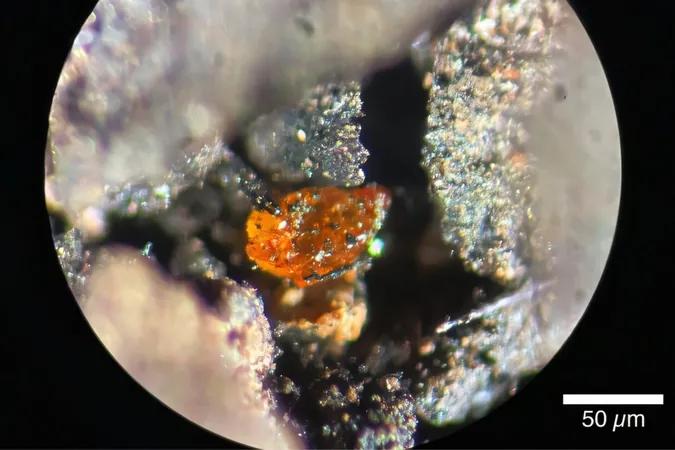
Unprecedented Amber Discovery in Antarctica Sheds Light on Ancient Cretaceous Rainforests!
2024-11-13
Author: Li
Unprecedented Amber Discovery in Antarctica Sheds Light on Ancient Cretaceous Rainforests!
In an astonishing revelation, scientists have unearthed fossilized tree resin—amber—on the frozen continent of Antarctica for the very first time. While today the continent is synonymous with ice and extreme weather, it once thrived with lush, swampy forests teeming with life. This remarkable find occurred at a depth of over 3,100 feet (946 meters) beneath the Amundsen Sea Embayment in West Antarctica, as detailed in a groundbreaking study published in Antarctic Science.
The significance of this amber discovery is monumental. Johann Klages, a marine geologist at the Alfred Wegener Institute and the study's lead author, stated, “The analyzed amber fragments allow direct insights into environmental conditions that prevailed in West Antarctica 90 million years ago.” This remarkable revelation aligns with their past work, published in 2020, where researchers reconstructed an ancient temperate rainforest that existed in Antarctica between 92 million and 83 million years ago.
In their previous study, researchers developed a climate simulation based on fossilized roots discovered in mudstone formations. Now, the newly recovered amber, albeit small due to the nature of sediment coring, is believed to contain precious micro-inclusions of original tree bark, offering a snapshot of the biodiversity of that era.
The implications of this research extend far beyond mere curiosity. Amber is renowned for its preservation capabilities, often trapping and immobilizing insects and other organic materials, providing paleontologists with invaluable insights into prehistoric ecosystems. Klages emphasizes that these finds firmly confirm the presence of resin-producing trees that once flourished in a damp, swampy environment—an ecosystem that today seems unimaginable in Antarctica.
This discovery aligns with previous reports, such as a 2020 study published in Proceedings of the Royal Society B, which showcased amber fossils containing ancient insects dating back 66 million years. Scientists hope that further amber discoveries in Antarctica will elucidate the fate of its ancient forests and perhaps unearth remnants of the creatures that once called this now-frigid wilderness home.
What’s even more astonishing is that, at some point, all seven continents supported climatic conditions conducive to the growth of resin-producing trees. “This discovery takes us on a direct journey to the past, allowing us to consider what ancient life might have thrived in these now-lonely lands,” says Klages.
The sediment cores date back to the Cretaceous Period, a period that is a staggering 25 million years prior to the extinction of influential species such as the Tyrannosaurus rex. These new finds are not only enriching our understanding of Antarctica’s ecological history but also provide clues to how climates shifted dramatically throughout Earth's history.
As researchers dig deeper, the team is eager to investigate further into the uniqueness of the region’s ancient ecology. They aim to uncover more evidence of resin flow—a biological defense mechanism in trees against pests and fire damage—even more details about the prehistoric ecosystems that once thrived beneath the ice.
Stay tuned as we continue following this groundbreaking research, which promises to reshape our understanding of ancient life in the frozen realms of Antarctica!


 Brasil (PT)
Brasil (PT)
 Canada (EN)
Canada (EN)
 Chile (ES)
Chile (ES)
 España (ES)
España (ES)
 France (FR)
France (FR)
 Hong Kong (EN)
Hong Kong (EN)
 Italia (IT)
Italia (IT)
 日本 (JA)
日本 (JA)
 Magyarország (HU)
Magyarország (HU)
 Norge (NO)
Norge (NO)
 Polska (PL)
Polska (PL)
 Schweiz (DE)
Schweiz (DE)
 Singapore (EN)
Singapore (EN)
 Sverige (SV)
Sverige (SV)
 Suomi (FI)
Suomi (FI)
 Türkiye (TR)
Türkiye (TR)